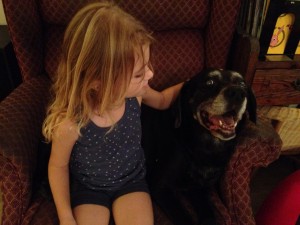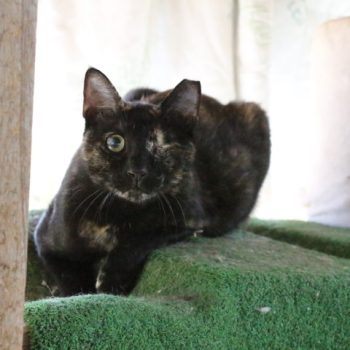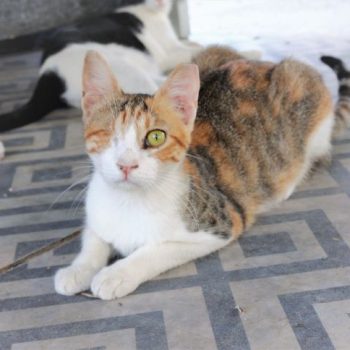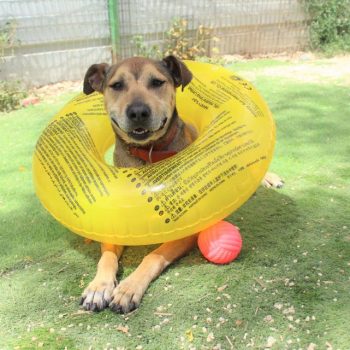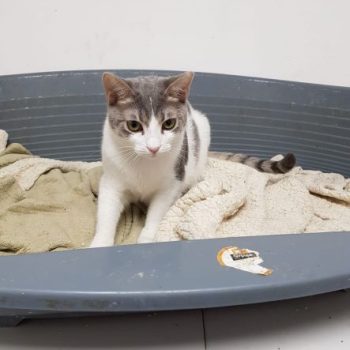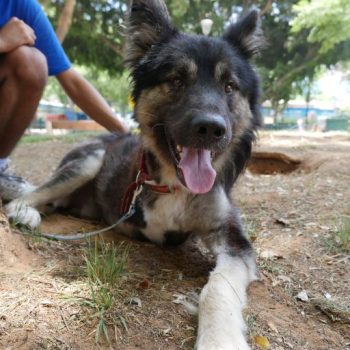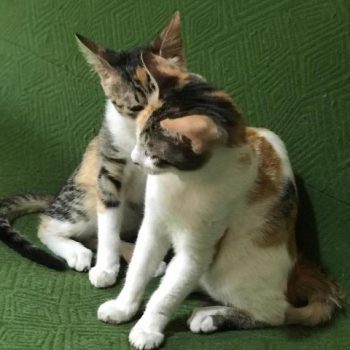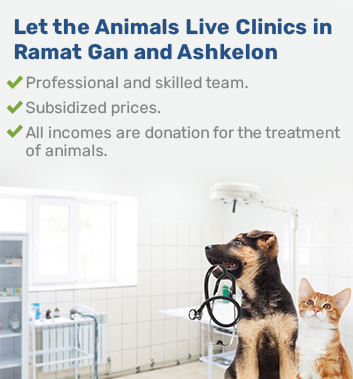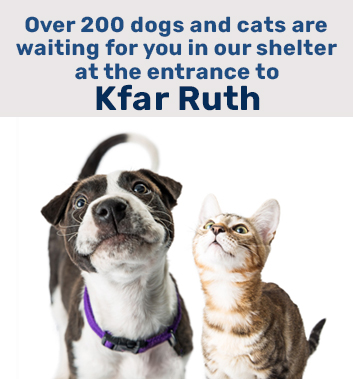In order to understand each other and create a right and true friendship with your dog, it is important first of all to understand what a dog is, how he thinks and learns, what motivates him and what his needs are and how to make him integrate into our human lives in the most correct way.
We must bear in mind that the origin of our domestic dogs is from the wild nature, from the wolf or the jackal, and yet even though the dog has lived with us for many years, the qualities of his wild dog ancestors are inherence in him. The dog is not born with understanding and knowledge of how to behave in our human lives: unaware of the leash, not defecating at home, how to behave on the street and while crossing a road. After all, in nature he does not have to deal with these things.
Did you ever see a dog chasing cats, birds and bicycles on the ride? Have you ever wondered where it’s coming from? This behavior comes from the wild hunting urge. This instinct is used by a dog in the wild to obtain food, in nature the dog hunts its food, chases animals and feeds on them. In our lives the dog should not hunt since he receives the food from us, so the hunting instinct is expressed in the pursuit of moving things.
Don’t we all like the dog to give us the ball back? Some dogs do it naturally. How does that happen? This is where the instinct of bringing is expressed. In the wild during hunting, the hunted animal is brought to the pack as food for puppies, nursing females and to save food for the future. In our lives the dog does not need it so this instinct is expressed in the form of play, return the ball!
It is important to understand that the dog is a “band/family animal”. He’ll always look for the company and need it. When the dogs live with us, with the family, we’re the band in their eyes. As with any band in order to have a fun and comfortable life, cooperation is required, so the dog will be happy to collaborate with the owner and be his best friend.
It is interesting to find out where our dog’s behaviors come from and once we realize that our dog is a wild animal that is driven by wild instincts: he thinks differently from us, he interprets things differently and he speaks a different language than ours, it will be easier for us in the daily coping and we will try not to get into frustrations and be creative and teach him the rules and limits of our lives in a way that he will understand, will cooperate and we will enjoy the process together.
Just as it is clear to us that a newborn baby does not know how to behave and we teach him and give him guidance and confidence how to live in harmony with the world, all the more so we will have to teach and guide the “little wolf” that is in our home.
In order to understand how the dog thinks, we will give you some examples:
The dog links things to the time of the act. For example: You walked out of the house and left the dog alone, when you returned you saw that the dog had defecated and caused some damage. Most people have the tendency to be angry with the dog in such a situation, while the dog does not understand what the anger is about and most likely his behavior will be repeated. The dog will show signs of “understanding”, lower his ears and go sit on the sidelines but this is just a natural reaction to your anger, he does not link the anger to the damage he has caused. If you had caught the dog in the act, you could have stopped the action and take him out to defecate, and here there would have been proper learning without negative cracks in your relationship.
Another example: you called your dog to come to you while hiking outside. The dog did not respond to the call immediately and came a few minutes later. Once the dog reaches his owner, most people will scold the dog for not reaching them while it was called. It is important to understand that the dog no longer links the owner’s call to the anger and therefore learns that when he reaches his owner he receives anger. That’s why next time he will not want to go back to the owner and here may start a cycle of wrong relationship. Even if the dog did not come when you called him and arrives a few minutes later, praise him for coming to you and so he will be happy to come more often willingly and look for a shield next to you in danger.
Puppies:
We all love puppies, they are cute, small, naughty and smell good!
A puppy is defined until about 8 months of age, depending on the breed. In most mixed breeds at 7-8 months of age the dogs enter adolescence – a teenager just as in humans and until then it is considered a puppy.
It is recommended to remove the puppy from the mother and separate from the siblings at 8 weeks (2 months). During this time the puppy learns from the mother and the litter very important things for his life such as: proper canine communication, delay of bite and receiving mental resilience.
If you have taken a puppy younger than two months, it is worth being aware that he has not completed what he needed to learn from the mother, and in order not to be lacking in the future it is worth helping him. It is worth meeting him with adult puppies and dogs who understand canine communication, so that he will be taught what he has not learned from the mother. In addition, these puppies will find it more difficult to be left alone, and here too it is worth gradually accustoming the puppy to staying at home and not being alarmed if the puppy screams and cries, to approach him when he is calm and strengthen calm behavior. If you are having difficulty coping, it is recommended to contact a dog trainer for guidance and for building a stable foundation for the rest of your life and friendship.
So we’re crazy about our new puppy and wrap it up with love, but what happens when the puppy starts peeing and pooping at home? Ruin things for us? Bite the guests and jump in the room?
Most people do not know how to deal with these situations correctly and easily for everyone, so we will bring before you solutions and tips on how to teach the new puppy to behave in our human life, understand why it behaves as it does and prevent future problems that can arise as a result of misconduct.
Pee and poop? Really nonsense!
As we already know from the introduction: we have a “little wolf” in the house that does not understand what is allowed and what is forbidden. And another thing we already know is that the dog learns in the act and not even a minute after it. It is important to understand that a small cub of two – three months cannot hold back for many hours physically and does not know that it should be holding back at all since it is not natural for him, and this is where we come into the picture to teach him. In education for needs and generally in every education we must have patience, consistency, and perseverance.
Most of the time our cub will have needs:
– After food
– After sleep
– After an activity/game – the puppy will go for a drink and have a pee
– After drinking
In order to do the process in an orderly manner and not to create bloopers and frustrations, it is worth purchasing a puppy fence in advance:
A puppy fence is designed to provide the puppy with his own place and preventing him from learning unwanted behaviors such as destruction and pee/poop throughout the house. In addition, the fence is a great tool for establishing a proper relationship between us and the cub by being able to teach the puppy the command “to the place” from an early age, and instead of chasing him at home and worry that he’ll cause troubles when we’re not watching, to route him to his place and thus the dog will understand how he is expected to behave.
The puppy fence must be placed in a central place in the house, so that the puppy can be with us and at the same time in his place and will not feel socially isolated, since we already know that a dog is a pack animal and would prefer to be with us.
It is recommended to accustom the puppy to sleeping at night in a puppy fence so that he can get used to his independence and place. If our puppy has a hard time and he cries in the first few days, the fence should be put close to our room to make him feel safe and gradually to move it away. The puppy must be left in the fence when we are not at home in order to prevent destruction and in order to teach calm and staying in the familiar and safe place.
Inside the fence on one side we need to put a bed/blanket and the dishes of water and food. The rest of the empty space should be filled with newspapers in order to teach the puppy to pee or poop on the newspaper inside the fence or alternatively outside.
Once he has peed on the newspaper inside the fence, replace the newspapers and leave a piece of newspaper with the pee in the remotest place from the bed (on the other side of the fence). The goal is for the cub to learn to do his needs at this point which is far from its bed, and at one point and not scattered throughout the fence. Of course, the goal is for the puppy to do his needs as much as possible outdoors and less inside the fence, but when we do not have an option to take the puppy out, it is better he’ll do it inside the fence.
From day one it is recommended to accustom the puppy to eat orderly meals, which means not to leave him food all the time.
Place the food dish in the puppy fence and show the puppy the food, leave 10 minutes and lift the plate. If he does not eat, at the next meal he will be hungry and devour the food. Repeat the plate lifting at each meal, so that the puppy understands that he must eat the food as soon as it is served.
Orderly meals significantly facilitate the education for needs process for our “little wolf”, because we will have control over the poop and we will be able to direct the puppy to do it outdoors from the very first moment. The digestive system of puppies works quickly, the puppy will want to poop about 10-30 minutes after the meal and therefore we will know to take him out. It is worth getting the puppy used to do his needs in a permanent place close to home in order to create a habit when going on a trip. The first thing we do is our needs (pee or poop) and then go for a walk and enjoy the environment.
Don’t worry! The puppy is not obligated to stay in the fence all day, the goal is to create a convenient agenda for the puppy and for us that will include a routing to do needs outside without frustrations and punishments, to teach the puppy our place and to create the right habits for the future. It is worth taking the puppy out about 5-6 times a day.
The fence prevents the puppy from learning to destroy things at home by having no access to them, and we must provide him with alternatives in the fence such as: biting rope, behavioral toys, bones, etc.
It is recommended to release the puppy in the house or yard only after he did his needs and under our supervision, and when we can’t watch he should be placed in the puppy fence. At home with children it is worth teaching the children not to disturb the puppy when he is inside the fence, as they would not want to be disturbed. In addition, some puppies will learn that they receive attention in the fence and over time will start barking and demanding attention, and the fence will become a nuisance instead of being the puppy’s safe and calm place.
If we are at home all day and have a lot of time to invest in the puppy it is also possible to educate him without a puppy fence, simply to take the puppy out every two to three hours, put a newspaper somewhere in the house and make a bed for him. But from experience, using a puppy fence from an early age means quality of life for everyone and prevents many problems for the future.
The puppy fence is used as a playpen for the newborn baby. Imagine there was no playpen, how difficult it was to raise babies.
Exposure + Habituation to the Leash
As we already know, our “little wolf” does not know at all what a leash or collar is, that is really not in his natural lexicon, and of course does not know how to react and behave with all human life out there. Therefore, it is our job as his parents and educators to teach him and prepare him for everything that is going on in our lives starting from his first day at home.
Until the age of 4-5 months the puppy is in the most critical period of its life, the cubs of that age are very flexible and get used to changes more easily than in other life periods. This is the best time to get the puppy to know a wide variety of pleasant experiences – getting to know a wide variety of people, meeting with other animals, meeting and playing with dogs of all shapes and sizes, traffic, busy streets, bus and train stops, and so on. There is an obligation to satisfy the need for socialization along with keeping the cub from exposure to diseases.
If we will expose the puppy during the critical period of his life, in most cases we will have a stable and mentally resilient dog to deal with environmental stimuli and he will not be a coward or an aggressor in the future. Most of the behavioral problems we encounter in the future stem from a lack of proper exposure to the environment during the critical periods.
Put a collar on the puppy from the first moment and connect it to the leash, you can do the first practice at home or already outside. Most dogs will react calmly to the leash, and some will refuse to walk. In such a situation, you can take a piece of sausage in your hand, spur the puppy to walk with the sausage and to pamper him when he walks next to you and receives the leash. It is also possible to walk next to an adult dog that is accustomed to a leash and the puppy is most likely to follow him and to learn from him.
Mommy! The puppy bites me
Part of the puppy’s growth process is dental replacement and during this period the puppy will try to bite everything that is next to it. In addition it is natural behavior for the dog, some dogs are very oral and tend to use their mouth more than others.
It is important to understand that biting is part of the puppyhood and that it is normal. It is not possible to eradicate behavior during the puppyhood but only to direct the puppy to bite and play biting with things that we allow such as: bite toys and behavioral toys.
First of all, once the puppy comes out in an orderly manner and dismantles energy by walking and playing with dogs, the amount of bites and the frequency of bites will be low, so it is important to let the dog discharge physical and mental energy.
Puppies tend to bite our arms and legs because it is soft and fun and always they get a reaction from us. If it’s anger, giggling or touching the puppy’s mouth it will usually spur the puppy to keep biting because he manages to interact with us. This interaction is not good for us and teaches the puppy unwanted behavior, so it should be stopped in the early stages. First, the bites should be ignored, not to react at all and even put your hands behind the back. If the puppy stops it should be given a bite toy as reinforcement and also as an alternative to our hands.
If the puppy is stubborn and does not stop, one should get up immediately and stop any interaction with the puppy, go to another room or deal with something else and completely ignore the puppy. Once he has stopped, an alternative should be given.
You can also put the puppy in a puppy fence with a bite toy or behavioral toy for mental energy discharge.
It is very important not to create a situation in which the puppy bites us and at that moment receives a toy or reward, because that may teach him that biting brings a reward.
The idea is not to continue an interaction that is not right for us because once the puppy learns that it is possible to get attention following a bite, he may continue these habits beyond the puppyhood and that will cause future behavioral problems.
These toys can be purchased at any pet store.
Kong: Rubber cone with hole in the middle. Inside the hole you can put various rewards and then the puppy has to figure out how to get the reward out of the hole. If you really want to challenge him, you can apply peanut butter and it’ll keep the puppy busy for a while. This toy dismantles mental energy since the action requires him to think and activate his mind and also ends up receiving an award!
Behavioral plate: plate with holes, works on the same principle as the Kong. In this plate it is recommended to put the dog’s food with the addition of a snack (sausage) to increase motivation, and then the dog needs to think and turn the plate in order for the flakes to come out. This toy is suitable for both a puppy and an adult dog.
Beeping rubber game: Puppies will usually love beeping games. The puppy’s attention can be drawn with a beep in the toy as soon as it bites something unwanted, or if we want to call him and once he comes we’ll let him bite the toy or throw it to him.
Pull/bite rope: A rope that the puppy can bite and play with, and can also serve as a game between us and the puppy with pulls and bites (in order to create a correct pull game and not increase game aggression one must consult a professional trainer).
Bones for the dog: Before buying it is recommended to consult a veterinarian which bones should be given to the puppy.
How to communicate with the “Little Wolf”?
Patience, consistency and perseverance!
So it is already clear to us that our puppy does not understand Hebrew, English and also not Russian, so how do we communicate with him and teach him how to behave?
One of the important things about creating proper communication and a strong bond is trust. Our goal is to get to the point where our dog will trust us 100%. Trust with dogs is created by sending a clear message to the dog without confusing him with double messages, and not throwing our frustrations and angers at him whether it’s from our personal lives or from our attempt to educate him. Remember the values: patience, consistency and perseverance.
There is a language that everyone understands and all living things learn by it – reinforcements. It’s easy to strengthen the dogs with food, after all it is a preliminary reinforcement, something they can’t survive without and neither can we. We can teach the puppy with his food and it is recommended to add snacks, such as dog snacks from the animal store, to make the prize more meaningful.
It is recommended to pamper the dog for any desirable behavior that the dog performs, the more he will be reinforced, the more he will understand that he should repeat this behavior and thus reduce unwanted behaviors for us.
Learning the “to the place” command – the puppy must learn from an early age its place in the house, so that he will be calmer and understand its place. The command “to the place” must be taught from an early age by throwing a snack to the designated place and at the same time saying the words “to the place” once the dog moves towards it. It is also possible to lead the dog with the snack to the place and once he settles in to give him the snack and say the command. As long as the dog is in his place we pamper him, and slowly we increase our distance from the place and send the dog back there. If the dog enters his place, he should be given a snack while repeating the command “to the place”. This is how the puppy will understand the meaning of the words “to the place”.
To teach the dog to come to us – choose a word: “come”, “to me”.
Start the practice in a sterile place without stimuli, at home.
Stand in front of the dog, say the chosen word and give the dog the snack when he succeeds. Repeat this operation about 10-15 times.

